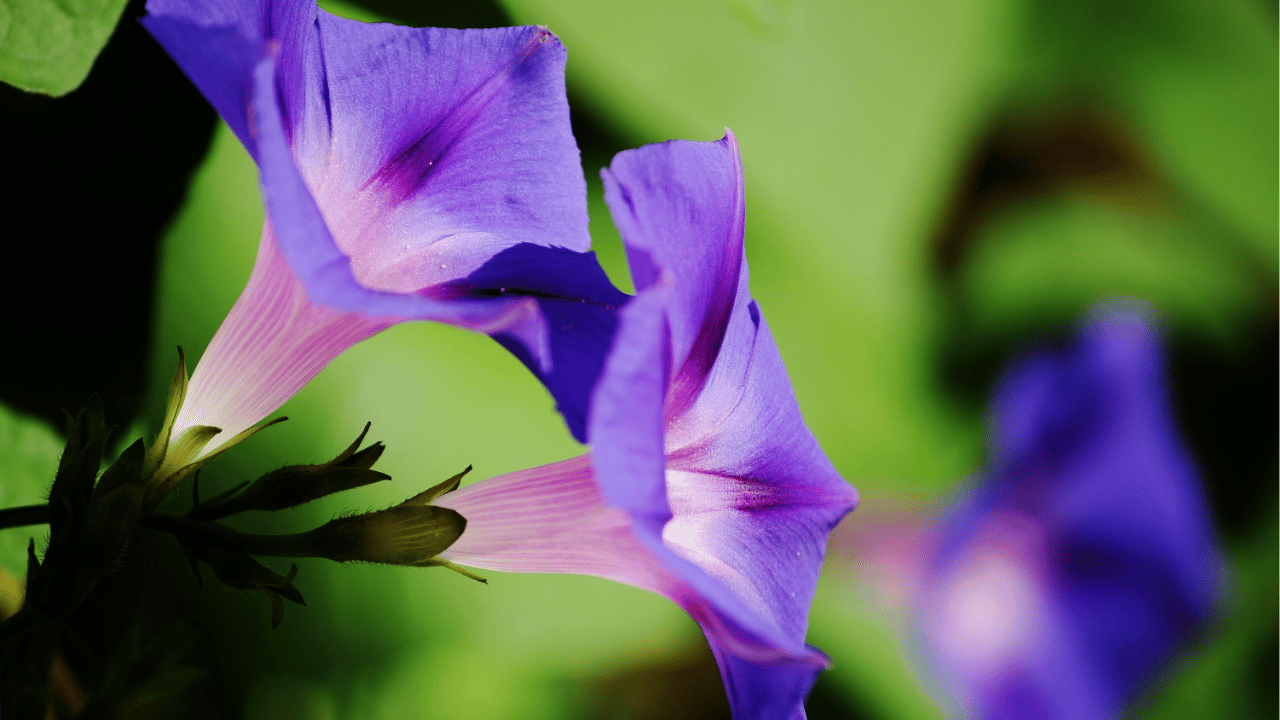Morning glory flowers are a delightful addition to any garden, showcasing their vibrant hues and vigorous growth. These climbing beauties are relatively low-maintenance but thrive when given the right care. With a bit of thoughtful attention, your morning glories will flourish, providing blooms that unfurl in the morning and add a burst of color to your space. Here are ten essential tips to help you nurture them to their full potential.
1. Choose the Right Location
Morning glories crave sunlight, so it’s crucial to plant them in a location that receives full sun. A minimum of 6-8 hours of direct sunlight ensures that they bloom abundantly and maintain healthy growth. While they can tolerate partial shade, lack of sufficient light can stunt their development.
Position your morning glories along trellises, fences, or arbors, as these climbing plants love to stretch out and cover vertical spaces. Ensuring proper support will not only help them thrive but also make for a more visually stunning garden feature.
2. Provide Well-Draining Soil
Morning glories are resilient, but they do best in well-draining soil. Sandy or loamy soils with good drainage prevent root rot, which can quickly harm your plants. While they can tolerate less-than-perfect conditions, too much water retention will cause their roots to suffocate.
To enhance soil drainage, mix in organic matter like compost or sand. This not only improves aeration but also provides essential nutrients, giving your morning glories a balanced environment to flourish.
3. Water Regularly but Don’t Overdo It
Although morning glories are somewhat drought-tolerant, consistent watering will lead to better blooms and growth. Aim to keep the soil consistently moist but not soggy. Water deeply once or twice a week, especially during dry spells, to promote strong root development.
However, be mindful not to overwater, as this can lead to root rot. A good rule of thumb is to let the top inch of soil dry out between waterings. Adjust the frequency depending on your local climate and the plant’s needs.
4. Use Mulch to Retain Moisture
Mulching around the base of your morning glory plants can be highly beneficial, especially in hot and dry climates. It helps retain moisture in the soil and prevents the roots from drying out too quickly, which can be particularly useful during summer heatwaves.
Additionally, mulch helps control weed growth, reducing competition for water and nutrients. Organic mulches like straw or shredded leaves are particularly effective, as they also contribute nutrients as they decompose.
5. Fertilize Sparingly
Morning glories are not heavy feeders, so avoid over-fertilizing. Excessive nitrogen will promote leaf growth at the expense of flowers, which can leave you with a lush, green plant but very few blooms. Use a balanced, low-nitrogen fertilizer sparingly, preferably once during the growing season.
If your soil is already rich in organic matter, your morning glories may not need additional feeding at all. Always monitor your plants and adjust fertilizer use accordingly, aiming for healthy but not overly vigorous growth.
6. Prune to Encourage New Growth
Pruning morning glories is an effective way to encourage fuller growth and more blooms. While they don’t require regular pruning, cutting back leggy or tangled vines can stimulate new shoots and flowers. It’s best to prune lightly throughout the growing season, especially after the initial bloom phase.
When pruning, use sharp, clean shears to avoid damaging the plant. Focus on removing dead or weak vines, and don’t hesitate to trim back overly aggressive growth to keep your plant tidy and thriving.
7. Control Pests Naturally
Morning glories are relatively pest-resistant, but they can occasionally fall victim to common garden pests like aphids, spider mites, and whiteflies. Instead of using harsh chemicals, consider natural remedies such as neem oil or insecticidal soap to keep these pests at bay.
You can also introduce beneficial insects like ladybugs to help control aphid populations naturally. Regularly inspecting your plants for early signs of infestation will allow you to tackle problems before they escalate.
8. Train Vines Early
Training morning glory vines early in their growth is essential to avoid tangled or unruly plants later on. Gently guide the young vines towards your trellis, fence, or any other support system you’ve set up. This ensures they grow in the desired direction, creating a beautiful and well-structured display.
Be sure to secure the vines loosely with garden ties or soft twine as needed. Over time, they will naturally cling to the support, but a little guidance early on ensures a more organized and aesthetically pleasing plant.
9. Deadhead for Continuous Blooming
Removing spent flowers, or deadheading, is a great way to encourage continuous blooming in morning glories. While these plants are prolific bloomers on their own, deadheading ensures that more energy is directed towards producing new flowers rather than seeds.
Simply pinch or snip off the faded blooms with clean scissors. This not only keeps your plant looking tidy but also prolongs the flowering period, giving you more beautiful blooms to enjoy throughout the season.
10. Prepare for Winter
In colder climates, morning glories will often die back as annuals. However, you can collect their seeds to plant the following year. Allow some flowers to form seed pods, then harvest the seeds before the first frost. Store them in a cool, dry place for future planting.
In warmer climates, morning glories can survive as perennials with proper winter care. Trim the plants back in late fall and cover the base with mulch to protect the roots from freezing temperatures.

